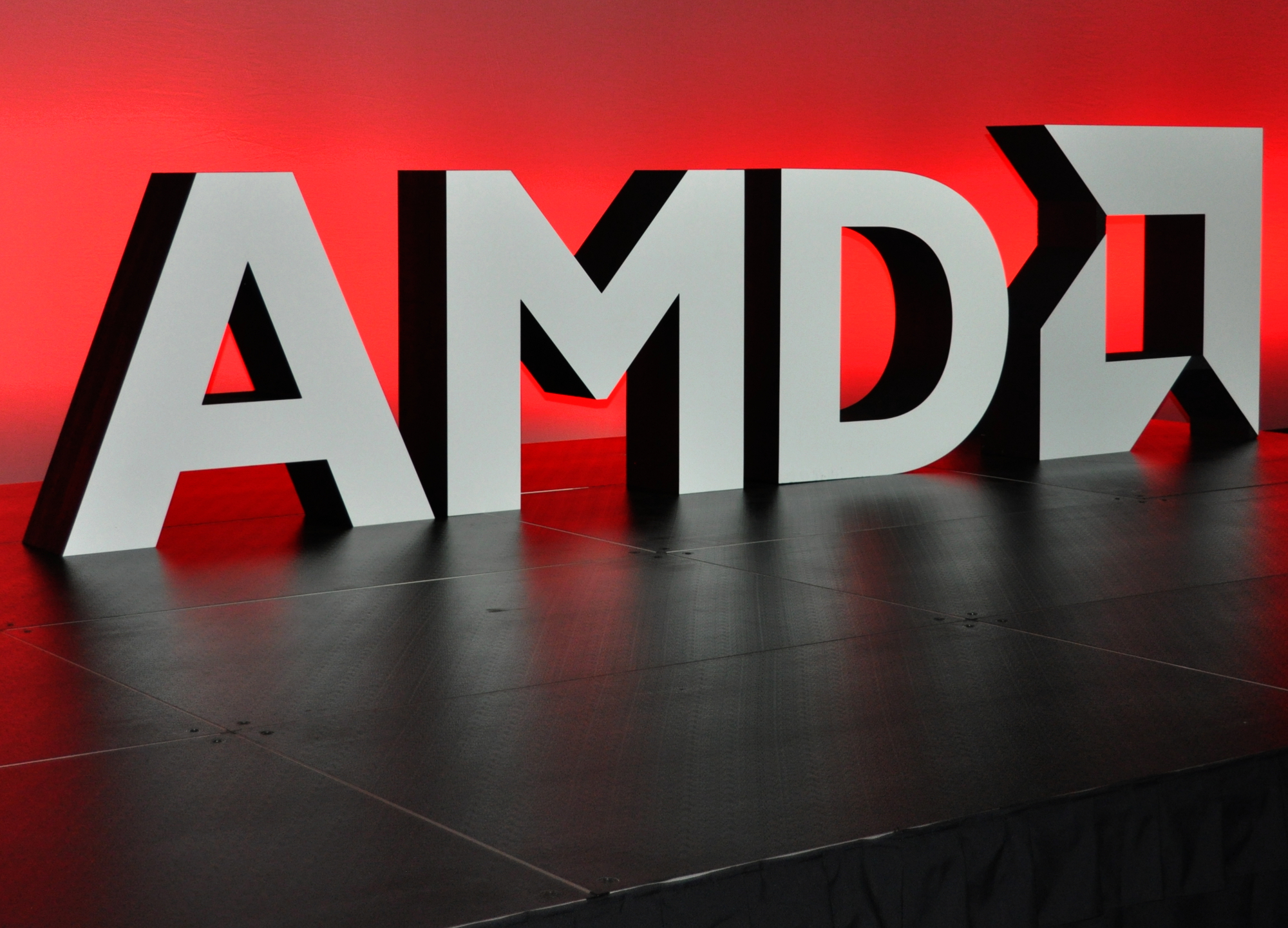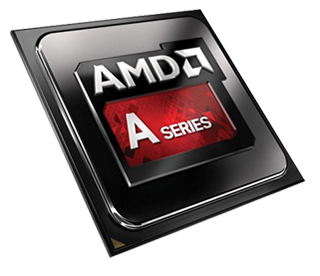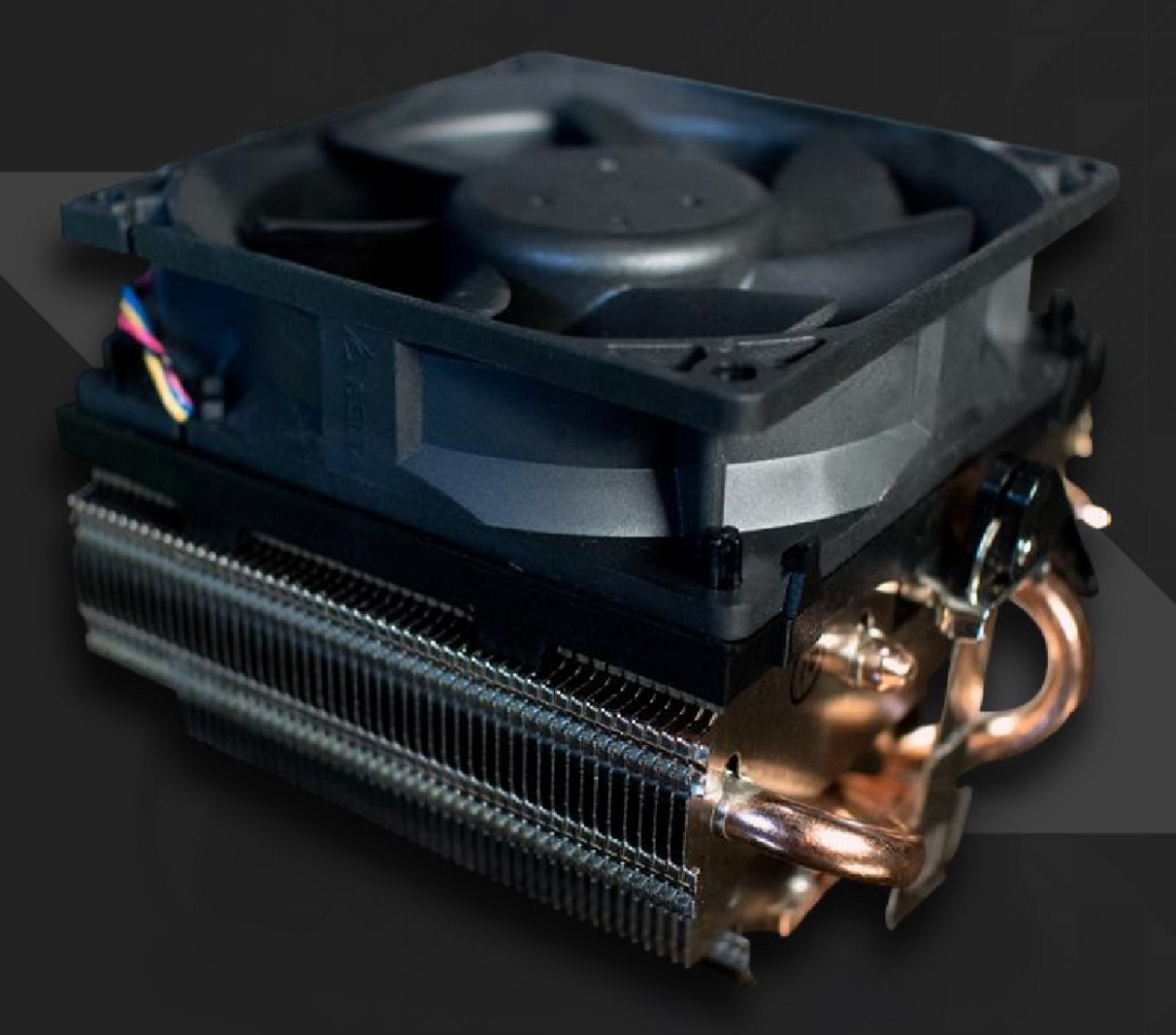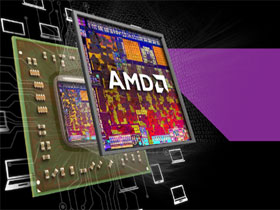AMD Launches New Flagship APU With Wraith Cooler
AMD has pushed the performance of its Kaveri-based APUs a little higher with the release of its new A10-7890K. Although a performance increase is always welcome, what really steals the show today is AMD's new Wraith stock CPU coolers.
MORE: How AMD's Wraith Cooler Came To Be
A New Flagship: The A10-7890K
The A10-7890K is almost completely identical to the A10-7870K. The only difference between the two CPUs is that the clock speed on the A10-7890K is 200 MHz higher, with a base frequency of 4.1 GHz and a turbo of 4.3 GHz. Typically, when AMD releases a new CPU with boosted clock speeds, it's because of the gradual maturity of the 28 nm process, resulting in better yields of higher-quality chips. Although that may factor in here as well, the speed increase of the A10-7890K likely has more to do with its CPU cooler.
The stock coolers that AMD previously provided with its APUs were relatively low-end. This has been common practice for a long time, and anyone really concerned about cooling their CPU would likely buy an aftermarket cooler anyways.
Even though stock coolers often are discarded, especially by enthusiasts, they still must be capable of sufficiently cooling the CPU. As a result, the stock cooler ultimately places a thermal limit on how far companies like AMD can push the factory set clock speeds on their products.
As the old stock cooler included on APUs was an especially poorly performning cooler, AMD opted to release its AMD Wraith cooler on the A10-7890K. The immediate benefit of this is that it allows the company to push its CPU harder, and thus allows it to ship clocked higher than the older A10-7870K.
The use of the Wraith cooler also helps to make AMDs APUs a more viable solution for gamers on a tight budget. Typically, a gamer building an APU system would have little choice but to get an aftermarket cooler or deal with significant throttling, but the Wraith cooler is rated to chill CPUs with a considerably higher TDP (up to 125 W), so it shouldn’t have any issues keeping the 95 W TDP A10-7890K cool even with a mild overclock.
Get Tom's Hardware's best news and in-depth reviews, straight to your inbox.
For users on a tight budget, this extremely helpful, as instead of tossing out $20 on an aftermarket cooler when you only have $400 to build a PC, you can then repurpose those funds into some other aspect of the system.
MORE: AMD Wraith CPU Cooler Review
A New 125 W TDP Cooler
Although the A10-7890K is now the fastest APU on the market, the A10-7870K still offers the best value. The A10-7890K would have a significant advantage because of the Wraith Cooler, but AMD announced that the A10-7870K is getting a new cooler, too.
The new cooler shipping with the A10-7870K doesn’t have a name; it's simply referred to as AMD’s new 125 W thermal solution, but it is actually the Wraith Cooler with the plastic shroud removed. AMD informed us that there is absolutely no difference between the two in terms of their cooling performance or noise production, as they both use the same metal heatsink and fan.
The A10-7870K equipped with this 125 W TDP cooler will likely have little difficulty matching the clock speeds of the A10-7890K. As the A10-7890K is set with a suggested price (SEP) of $164.99, whereas the A10-7870K with the new cooler will be introduced at the same price point as the A10-7870K with the old stock cooler ($139.99 SEP), gamers on a tight budget will likely find more value in the A10-7870K.
| CPU | AMD Athlon X4 860K | AMD Athlon X4 880K | AMD A10-7870K | AMD A10-7890K |
|---|---|---|---|---|
| Cores | 4 | 4 | 4 | 4 |
| GPU Cores | 0 | 0 | 8 | 8 |
| CPU Speed | 3.7 GHz | 4 GHz | 3.9 GHz | 4.1 GHz |
| Turbo Speed | 4 GHz | 4.2 GHz | 4.1 GHz | 4.3 GHz |
| GPU Frequency | N/A | N/A | 866 MHz | 866 MHz |
| TDP | 95 W | 95 W | 95 W | 95 W |
| Thermal Solution | Old Stock Cooler | New 125 W Thermal Solution | New 125 W Thermal Solution | AMD Wraith Cooler |
| L2 Cache | 4 MB | 4 MB | 4 MB | 4 MB |
| Price | $72.99 (Newegg) | $94.99 (SEP) | $139.99 (SEP) | $164.99 (SEP) |
The AMD Athlon X4 880K
AMD released another new FM2+ CPU as well, the Athlon X4 880K. The X4 880K, compared to the X4 860K that it replaces, benefits from a 200 MHz increase to the base clock and a 300 MHz boost to the Turbo frequency. It also comes with the same 125 W TDP cooler as the A10-7870K.
Although it is faster at stock speeds, it will likely have trouble attracting budget-oriented gamers. Just like with the A10-7890K, the X4 880K’s increase in performance is likely due to the better thermal solution AMD bundles with it, and a properly cooled X4 860K will likely be able to match overclock at the same speed.
The price for the X4 860K on Newegg is currently over $20 less than the the SEP of the X4 880K, so users could realistically buy the X4 860K and choose from a variety of decent aftermarket air coolers and come out at about the same price as the X4 880K.
All of these processors are available now.
Follow Michael Justin Allen Sexton @EmperorSunLao. Follow us on Facebook, Google+, RSS, Twitter and YouTube.
-
dyevad Is this going to end up in the CPU performance per dollar cost chart? I love those things. I have an 8 core 8120. How much better does this CPU perform?Reply -
hst101rox ReplyIs this going to end up in the CPU performance per dollar cost chart? I love those things. I have an 8 core 8120. How much better does this CPU perform?
A couple % better, linear with clock speed increase.
Their Zen CPUs for 2016/2017 might bring a good jump in performance and efficiency though.
What is the difference between the Wraith cooler and the 'New 125w thermal solution'? EDIT: Basically the non-wraith just doesn't have the fan shroud, so a bit more noise, says Anand.
Since the new APU and CPU have just about the same CPU core clockspeeds, and the same TDP, I suppose the APU will throttle down the CPU core clocks if the GPU is heavily utilized. Or it's let it go beyond the TDP if temps are fine? -
RedJaron An 880K won't perform any better than a properly cooled and overclocked 860K. But an 860K has difficulty even matching a Haswell i3. I've done a fair amount of experimenting with 860K and given it every reasonable chance to shine. The problem is that getting them overclocked where they can take on an i3 requires spending additional money on a quality mboard and CPU cooler. By the time you do so, you've spent as much or more as you would've on a regular i3 platform. In general, it's not worth it.Reply
If the 860K gets the 7870K treatment and receives the new cooler without increasing its cost, it will get a nice bump in value. But even then, I don't see them as much more than a good way to get a quad-core CPU for those on the smallest and tightest of budgets. If you can stretch your money at all to afford an i3 or FX-6300, those are far better CPUs. -
Biscuit42 ReplyWhat is the difference between the Wraith cooler and the 'New 125w thermal solution'?
According to the article .. nothing but the removal of the plastic shroud. -
nix27 When is the last time AMD actually released a new product instead of just squeezing out more performance from already existing products and renaming them? What is happening with AMD?Reply -
IInuyasha74 Reply17590816 said:An 880K won't perform any better than a properly cooled and overclocked 860K. But an 860K has difficulty even matching a Haswell i3. I've done a fair amount of experimenting with 860K and given it every reasonable chance to shine. The problem is that getting them overclocked where they can take on an i3 requires spending additional money on a quality mboard and CPU cooler. By the time you do so, you've spent as much or more as you would've on a regular i3 platform. In general, it's not worth it.
If the 860K gets the 7870K treatment and receives the new cooler without increasing its cost, it will get a nice bump in value. But even then, I don't see them as much more than a good way to get a quad-core CPU for those on the smallest and tightest of budgets. If you can stretch your money at all to afford an i3 or FX-6300, those are far better CPUs.
Exactly, that is really the problem with it. At $94.99, it actually costs more than the FX 6300!
http://www.newegg.com/Product/Product.aspx?Item=N82E16819113286
Granted, you will want a better cooler with that as well, but the FX 6300 is a respectable CPU with decent performance and easily outperforms any of the FM2+ CPUs. So the 880K is going to be a hard sell. I actually neglected to mention in the article that the 860K actually has AMD's new 95 W TDP thermal solution, and doesn't really need an aftermarket cooler anymore either unless you get one of the older boxed units. So that gives it an even larger advantage against the 880K.
Long story short, AMDs other products are too competitive for the 880K to really get a position in the market.
@hst101rx: Please read the article, there isn't any real difference. Just the removal of the shroud. Cooling performance, noise production, etc. all remain unchanged. -
IInuyasha74 Reply17590379 said:Is this going to end up in the CPU performance per dollar cost chart? I love those things. I have an 8 core 8120. How much better does this CPU perform?
I'm not sure which specific CPU you are talking about, but I'd think you are best to keep your 8120 for now, as it should have overall better performance.
That is not to say, however, that it is going to be substantially faster. The 8120 used the first generation Bulldozer architecture, while all of these processors mentioned above use the third generation Steamroller architecture, which has significant improvements in clock speed and IPC. These CPUs don't have L3 cache too. As such, without having both on hand to test, I can't say for sure how they will stack up against each other, but the FX 8120 should still come out on top because of its additional cores. -
Calculatron If they can create a 65 TDP that is pretty close to the original A10-7850K, I wonder if they could have created a six-core part that fit within the 95 TDP threshold?Reply
This probably would have taken resources that they did not want to spend, and would have only worked on the higher-end A88X, in case it required a good VRM, but I am sure there would have been a decent market for those types of processors. Especially if they made them with Excavator cores. -
ta152h Reply17590379 said:Is this going to end up in the CPU performance per dollar cost chart? I love those things. I have an 8 core 8120. How much better does this CPU perform?
I'm not sure which specific CPU you are talking about, but I'd think you are best to keep your 8120 for now, as it should have overall better performance.
That is not to say, however, that it is going to be substantially faster. The 8120 used the first generation Bulldozer architecture, while all of these processors mentioned above use the third generation Steamroller architecture, which has significant improvements in clock speed and IPC. These CPUs don't have L3 cache too. As such, without having both on hand to test, I can't say for sure how they will stack up against each other, but the FX 8120 should still come out on top because of its additional cores.17590379 said:Is this going to end up in the CPU performance per dollar cost chart? I love those things. I have an 8 core 8120. How much better does this CPU perform?
I'm not sure which specific CPU you are talking about, but I'd think you are best to keep your 8120 for now, as it should have overall better performance.
That is not to say, however, that it is going to be substantially faster. The 8120 used the first generation Bulldozer architecture, while all of these processors mentioned above use the third generation Steamroller architecture, which has significant improvements in clock speed and IPC. These CPUs don't have L3 cache too. As such, without having both on hand to test, I can't say for sure how they will stack up against each other, but the FX 8120 should still come out on top because of its additional cores.17590379 said:Is this going to end up in the CPU performance per dollar cost chart? I love those things. I have an 8 core 8120. How much better does this CPU perform?
I'm not sure which specific CPU you are talking about, but I'd think you are best to keep your 8120 for now, as it should have overall better performance.
That is not to say, however, that it is going to be substantially faster. The 8120 used the first generation Bulldozer architecture, while all of these processors mentioned above use the third generation Steamroller architecture, which has significant improvements in clock speed and IPC. These CPUs don't have L3 cache too. As such, without having both on hand to test, I can't say for sure how they will stack up against each other, but the FX 8120 should still come out on top because of its additional cores.
The 28nm process was not designed for high clock speeds, and certainly do not reach the same clock speeds as the Piledriver based 32nm. But, 1st gen, maybe.
Having said that, saying the 8120 will not be faster in the vast majority of real world uses. First of all, it doesn't really have 8 cores, it has four modules each with two quasi cores each. Each module only had set of decoders on Bulldozer, whereas Kaveri each core has its own.
Plus, Piledriver had substantial improvements over the original Bulldozer, and of course Kaveri improved it a bit more.
Given the difference in clock speed as well, and the overall performance when running applications that run 8 threads would probably slightly favor the 8120, but not by that much.
The big issue is, using 8 cores at once isn't very common at all, and single-threaded performance is generally much more important. And on that, the 880K is around 50% faster. And that's true for anything up to four cores, give or take a few points here and there. You'd have to need 7 or more cores to show any advantage for the 8120.
Also, the L3 cache is so incredibly slow, even AMD has said it does not substantially improve performance.




